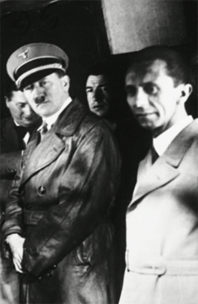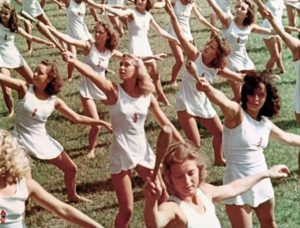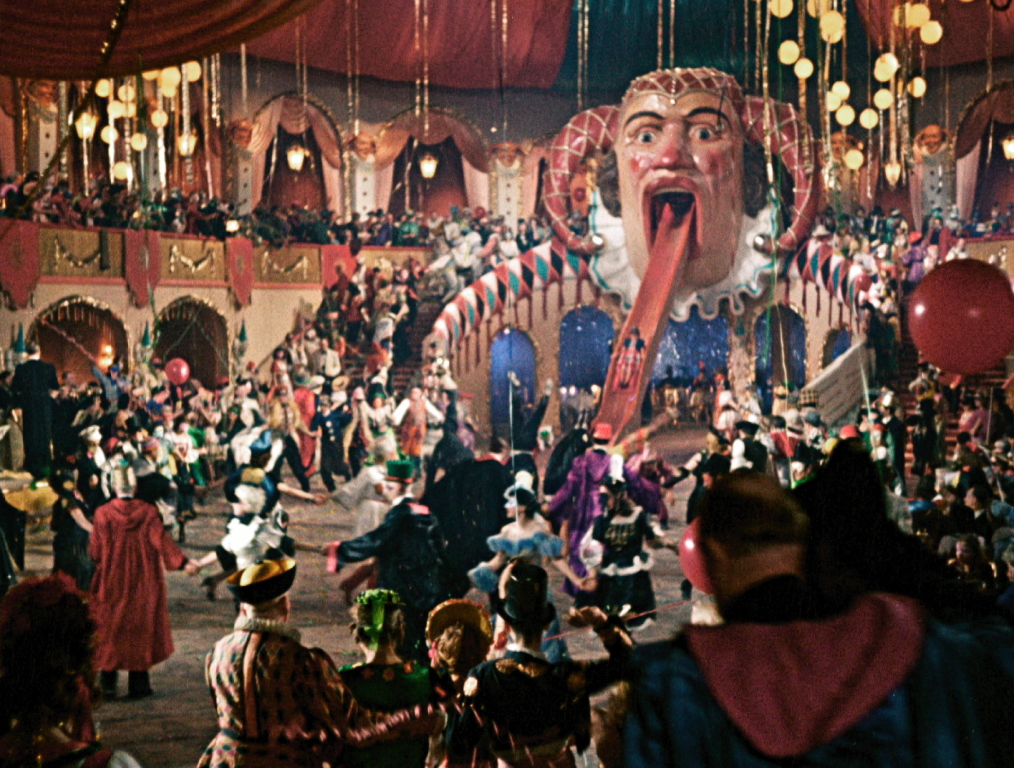
“What does cinema know that we don’t?”
Hollywood has always been the Dream Factory, allowing audiences to disappear into colourful fantasies projected on larger-than-life canvases. By the same token, mass-market films also act as a gateway into our collective unconscious – beneath the surface narrative lies the desires and concerns of a population at any given time, reflected back to us in an almost subliminal form. As notable German sociologist and film theorist Siegfried Kracauer stated, “Watching old movies is a mean’s of exploring one’s past.”
That quote opens Rüdiger Suchsland’s new collage-documentary, Hitler’s Hollywood, a psychological look into the films produced during the reign of the Third Reich. Suchsland returns to the thematic territory he explored with his first feature, a cinematic adaptation of Kracauer’s seminal book, From Caligari to Hitler, which looked at the psychological undercurrents present in the landmark German films of the 1920s that would predict Hitler’s impending rise to power. Now, in this sequel of sorts, Suchsland turns his attention to an era of film production that has largely been swept under the rug.
Once the Nazis took control of Germany in 1933, independent filmmaking was pretty much outlawed, causing most of the great directors and actors from the previous decade to emigrate to America or other parts of Europe. Nevertheless, the regime would go on to create their own film industry under the singular studio UFA, overseen by Joseph Goebbels and his Propaganda Ministry. Over the next ten years, as tensions between Germany and the rest of the world were escalating and horrible atrocities were being committed within their borders, lavish and extravagant spectacles were being cranked out with regularity for a German population hungry for them (those who weren’t being persecuted, that is).
Suchsland comprehensively takes us through the chronology of this time period, introducing the filmmakers and actors who rose to stardom under the Nazi flag. Some of the films are more widely known, like the works of Leni Riefenstahl or the infamous anti-Semitic propaganda tale Jew Süss, but many of these productions have been more or less forgotten since premiering all over German screens. There are so many new (old) faces and dynamic productions that you’ll want to do an IMDb deep dive afterwards to keep track of them all.
It’s incredible to see how, in terms of technical artistry alone, the films of the Third Reich were rivaling anything that Hollywood was putting out at the time. The German expressionist techniques and formal experimentation of the ‘20s combined with a kind of American pop sensibility to produce some eye-popping spectacles that could easily have been major hits across the globe. Between film noirs, musicals, historical epics, and slapstick comedies, the UFA was dabbling in everything.
Except, of course, it was all propaganda. The narratives are so blatantly racist, anti-Semitic, homophobic and just plain wrong about everything that they border on vile parody. It’s sickening to see how an entire nation ate this stuff up for years. Probing the films further, however, shows how they subtly reflected the public’s thinking at the time and how that would change over the course of the war. There’s a real jubilance and carefree nature to the works made early in the Nazis reign whereas a more melancholy foreboding looms over the stuff made closer to the collapse of the regime, when so many movie theatres were destroyed that it made it hard to even screen them in as wide a capacity. Not only did regime leaders orchestrate these films as propaganda but they also acted as a kind of collective psyche for the average Nazi-supporting citizen’s mindset.
This is the real point that Suchscland gets at. The clips of all of these different films flow into each other organically, with the wonderful Udo Kier lending his trademark voice to provide smooth narration throughout. Hitler’s Hollywood eventually comes to feel like a dream, or even like one of Guy Maddin’s surreal fantasias, because for German people at the time, that’s exactly what their cinema was – a beautiful dream of what the world would be like under Nazi rule. It was a fantasy so appealing as to distract from the monumental evil that was being committed on such a massive scale.
As Hannah Arendt is quoted within, “What convinces the masses are not facts, not even invented facts, but the consistency of the illusion.” Welcome to Hitler’s Hollywood – fascinating, scary and disturbingly relevant.
- Release Date: 7/20/2018


